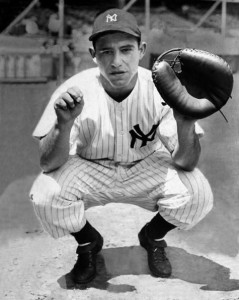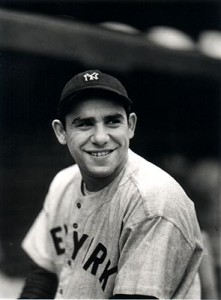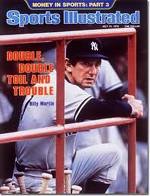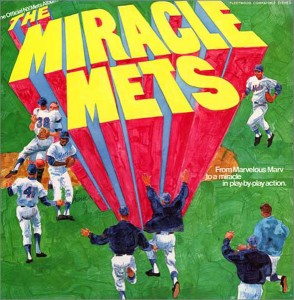Yogi Berra Transcended Baseball 2
Yogi Berra, who has passed away at the age of 90, wasn’t just a baseball legend, but also an American hero, cultural icon and national treasure. Not too bad for the son of an Italian immigrant who grew up in St. Louis.
Growing up across the street from another future baseball icon Joe Garagiola, Berra was an American Legion standout before signing with the New York Yankees in 1942.
Starting his career with the Norfolk Tides, who were a member of the Class B Piedmont League, Berra once drove in 23 runs in a doubleheader.
Like many other future baseball stars, Berra served in World War II. As a gunner’s mate, Berra served on the USS Bayfield during the D-Day invasion of France.
Following the war, Berra returned to baseball and despite not possessing great size or athleticism, soon began turning heads with his baseball abilities. He was tutored as a catcher by Hall of Famer Bill Dickey and eventually followed in Dickey’s footsteps wearing number 8 for the New York Yankees.
After appearing in seven games at the major league level in 1946, Berra appeared in 83 games in 1947 and was on his way to a long and illustrious major league career.
Berra made the first of his record 14 World Series appearances in 1947 and earned his first championship ring despite hitting only .158 with a home run and two RBI in six games against the Brooklyn Dodgers.
The following season Berra made the first of 15 straight All Star appearances while hitting .305 with 14 home runs and 98 RBI.
One of the elements that made Berra such an iconic baseball figure was that he served as a bridge between generations of Yankee greatness. He played five seasons with the legendary Joe DiMaggio and then spent more than a decade with the next iconic Yankee Mickey Mantle. While Berra didn’t necessarily have the physical talents of either of those stars, he ended up matching the Yankee legends as three-time winners of the American League MVP award. Read the rest of this entry →




